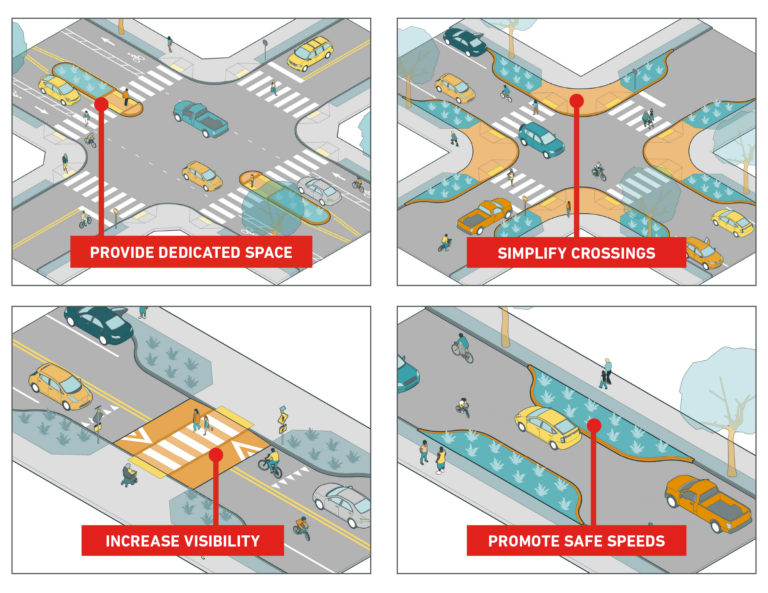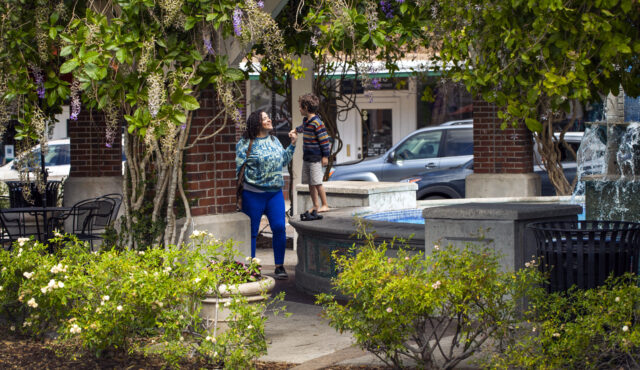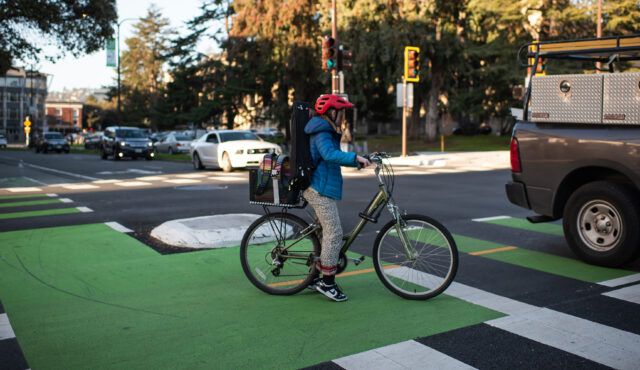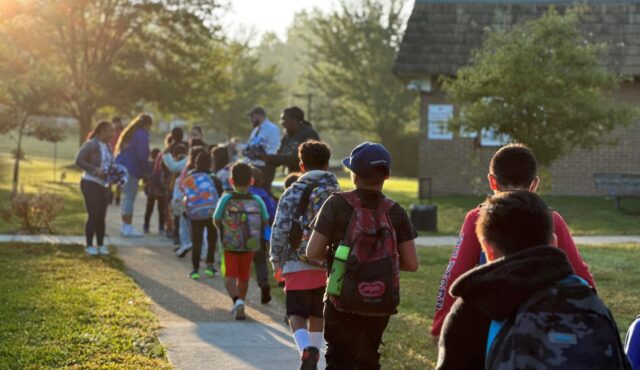The way students get to and from school can reveal a lot about a community. When parents feel comfortable letting their children walk, bike, or take the bus independently, it speaks volumes about the safety, accessibility, and welcoming nature of the streets. So, what are the Safe Routes to School best practices that communities can adopt to create safe, accessible, and welcoming conditions for students?
Toole Design has spent years building our Safe Routes to School (SRTS) expertise at every level, from federal and state resources down to individual communities and schools. With hundreds of SRTS projects under our belts, our team of SRTS specialists know from experience that success depends on striking the right balance of on-the-ground infrastructure projects and tailored education and encouragement programs. Read on to learn more about our Safe Routes to School best practices from SRTS Practice Lead Diane Lambert.
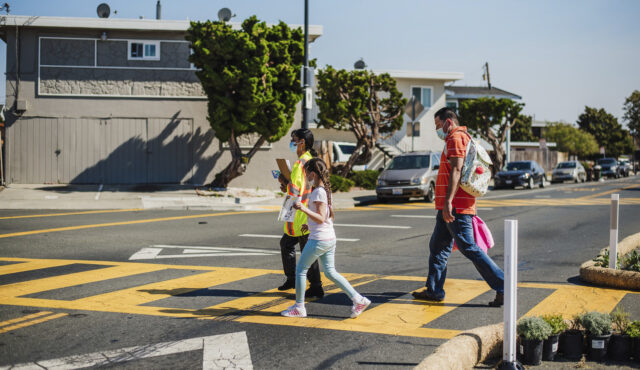
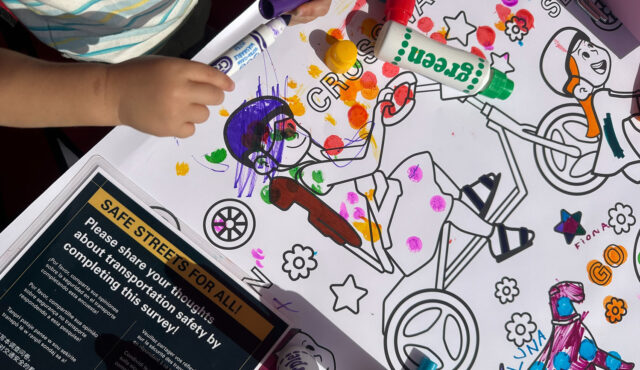
Be Intentional about Children and Youth Safety
While education and encouragement have long been at the core of SRTS programs, infrastructure is what drives real, lasting change in safety outcomes. Being intentional about improving transportation safety for children requires two key actions:
Acknowledge that children and youth have different needs and abilities. As we emphasize in this recent report we produced with the Pedestrian and Bicycle Information Center, children and youth are not just small adults. Younger children are still developing the physical and cognitive abilities to navigate their communities, and older youth often lack experience navigating complex traffic environments. If we embrace the Safe System Approach principles that humans are vulnerable and humans make mistakes, we need to acknowledge that these are even more true for children, and then act on that information.
Build environments that address the safety needs of children and youth. Environments where children travel by foot or bike — in neighborhoods, to schools, and to parks — warrant extra attention to build facilities that counteract children’s vulnerabilities. In our 20 years of experience in creating SRTS infrastructure plans, we’ve determined four key strategies that result in the most impactful youth safety outcomes:
- Provide dedicated space for walking, biking, and rolling.
- Simplify crossings to reduce complexity and potential conflict points.
- Increase visibility to ensure young road users can see and be seen.
- Promote safe speeds along school routes.
Integrate Children and Youth into Broader Transportation Planning
Safe Routes to School initiatives have been incredibly successful in building tangible infrastructure for active school travel, fostering passion and a sense of urgency around child safety, and inspiring change in how families travel to school. But, astonishingly, most Safe Routes to School programs operate in isolation from broader long-term safety or planning efforts, such as active transportation plans, Vision Zero plans, or Complete Streets policies.
Toole Design is leading the conversation on integrating youth and schools into broader transportation planning and piloting effective strategies. When you integrate children and youth into community-wide transportation planning, you can acknowledge and address their unique needs and abilities. Here’s how:
Tailor your safety analysis with youth-focused data. A key aspect of improving youth safety is having the right data to guide decisions. Examining youth crash data separately may reveal nuances that highlight their differing needs, allowing planners to pinpoint what types of improvements are most critical and which areas have the highest potential for reducing crash risk among children. We led the Pedestrian and Bicycle Information Center’s innovative Vision Zero for Youth demonstration project, which pilot-tested systemic analysis and equity analysis of youth pedestrian crashes in Philadelphia. The analysis revealed that youth crashes were occurring in different places than adult crashes and that 78% occurred within a quarter mile of a school. On a broader level, a youth-focused review of crash data may simply point to the need for a more nuanced assessment of youth safety. We’re currently studying factors related to youth safety for development of safety action plans in Rhode Island to supplement traditional reporting.
Elevate youth travel in SS4A-funded comprehensive safety action plans. The Safe Streets and Roads for All (SS4A) funding program provides an excellent opportunity to address the needs of children and youth and to secure funding for implementing youth-focused projects. Many communities are already using SS4A funds for SRTS projects, and some are going further by incorporating youth-related policies and actions into their comprehensive safety action plans. For example, Toole Design is elevating youth travel in our work on a comprehensive safety action plan for the City of Decatur in Georgia. We’re keeping the City’s successful SRTS program front and center in the planning, thoughtfully assessing identified school travel routes, and including high school students as active members of the stakeholder working group.
BUild the Culture through education and Encouragement
Beyond creating safe infrastructure, the foundation of a strong SRTS program lies in creating a culture of active transportation among youth. We help schools and communities achieve this through education and encouragement. Education efforts may include youth travel workshops, bike and pedestrian rodeos, activity books and videos, musical performances, and in-classroom curricula. For example, check out the educational materials we created for Safe Routes Philly.
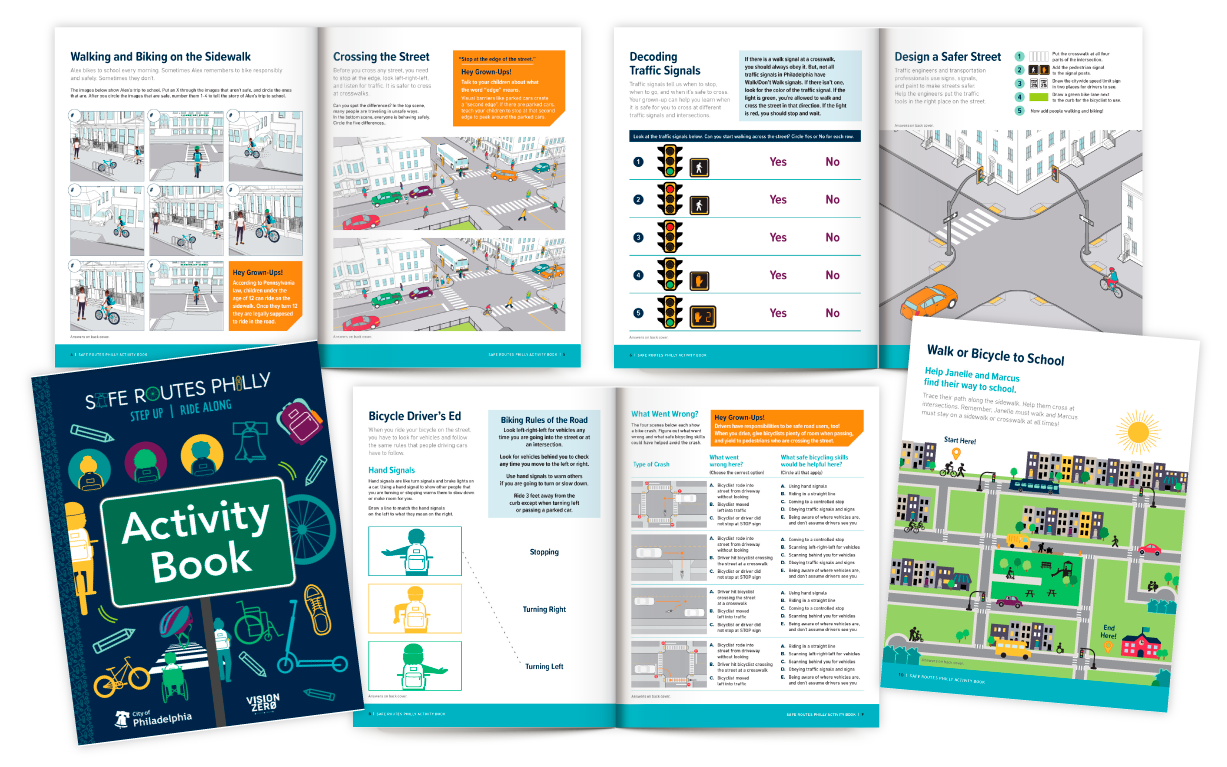
Creating an active transportation culture for youth also involves events and incentives that encourage students to walk, bike, roll, or take public transit. Encouragement tactics may involve dedicated days for walking and rolling to school, whether weekly, monthly, or on an annual basis. Getting a student to try a different travel mode even one day of the year, such as International Walk and Roll to School Day, which we support in Kansas and for clients throughout the country, can set in motion a new habit.
Importantly, it’s not just about designing programs for students — it’s about designing them with students. A great example is the Alameda County Safe Routes to Schools Program’s Youth Task Force, which brings students directly into the planning process. By involving youth, we can build a deeper connection with the community and ensure that safety messages and active transportation habits resonate more strongly.
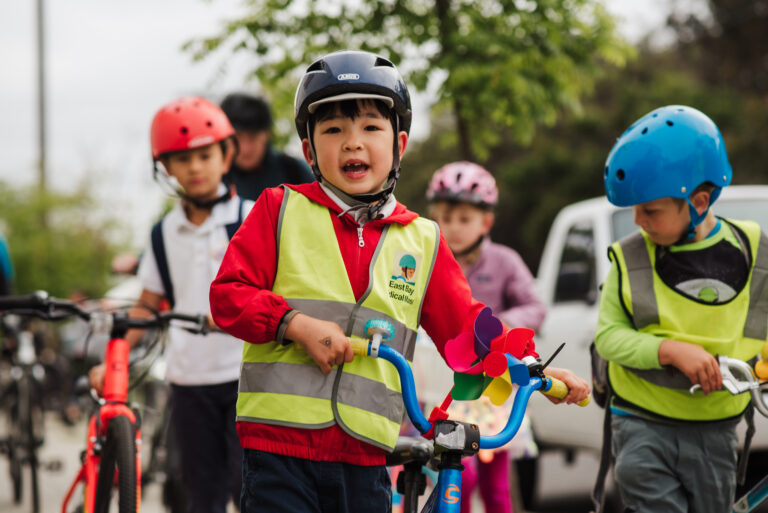
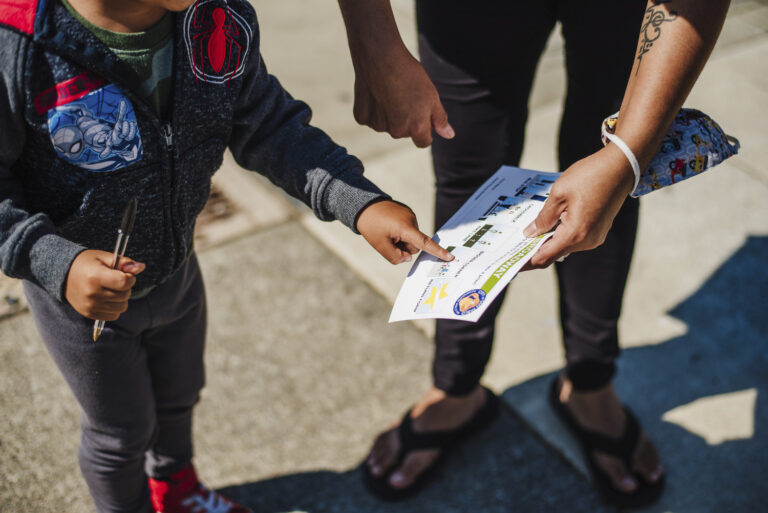
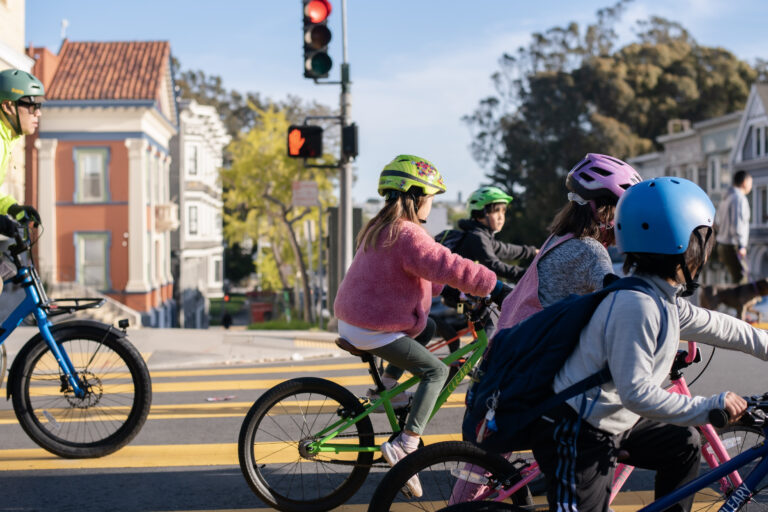
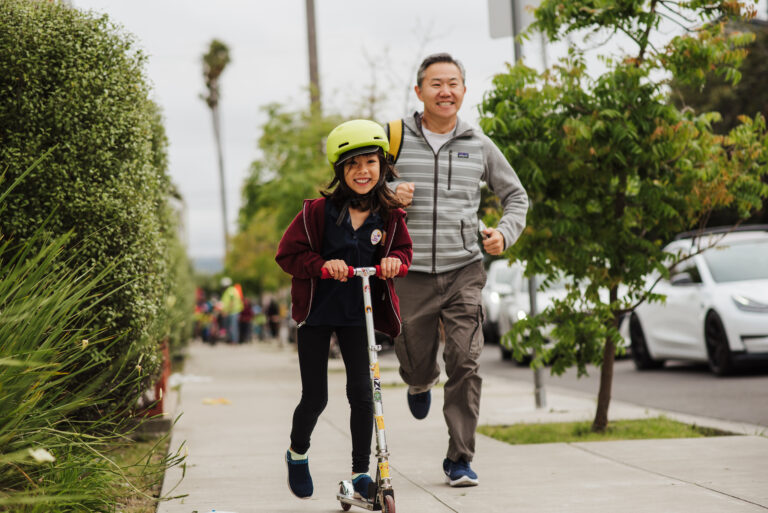
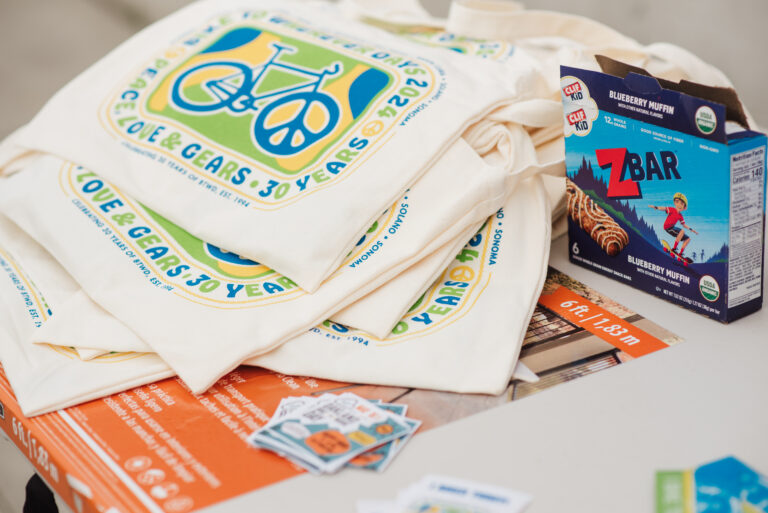
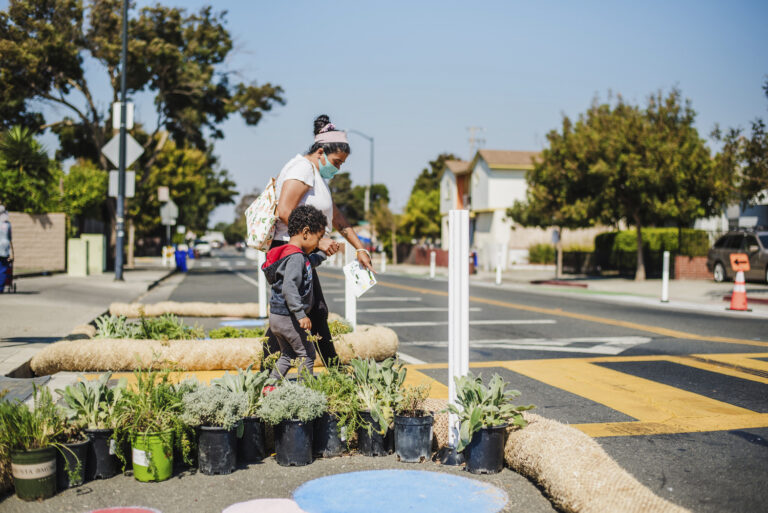
If you’re looking for ways to improve SRTS in your community, you’ll be most successful if you take a comprehensive, youth-focused approach that combines infrastructure projects and education and encouragement programming — and if you go beyond SRTS to incorporate youth safety into every transportation planning effort. By applying these Safe Routes to School best practices, together we can improve transportation safety for students and for entire communities.
